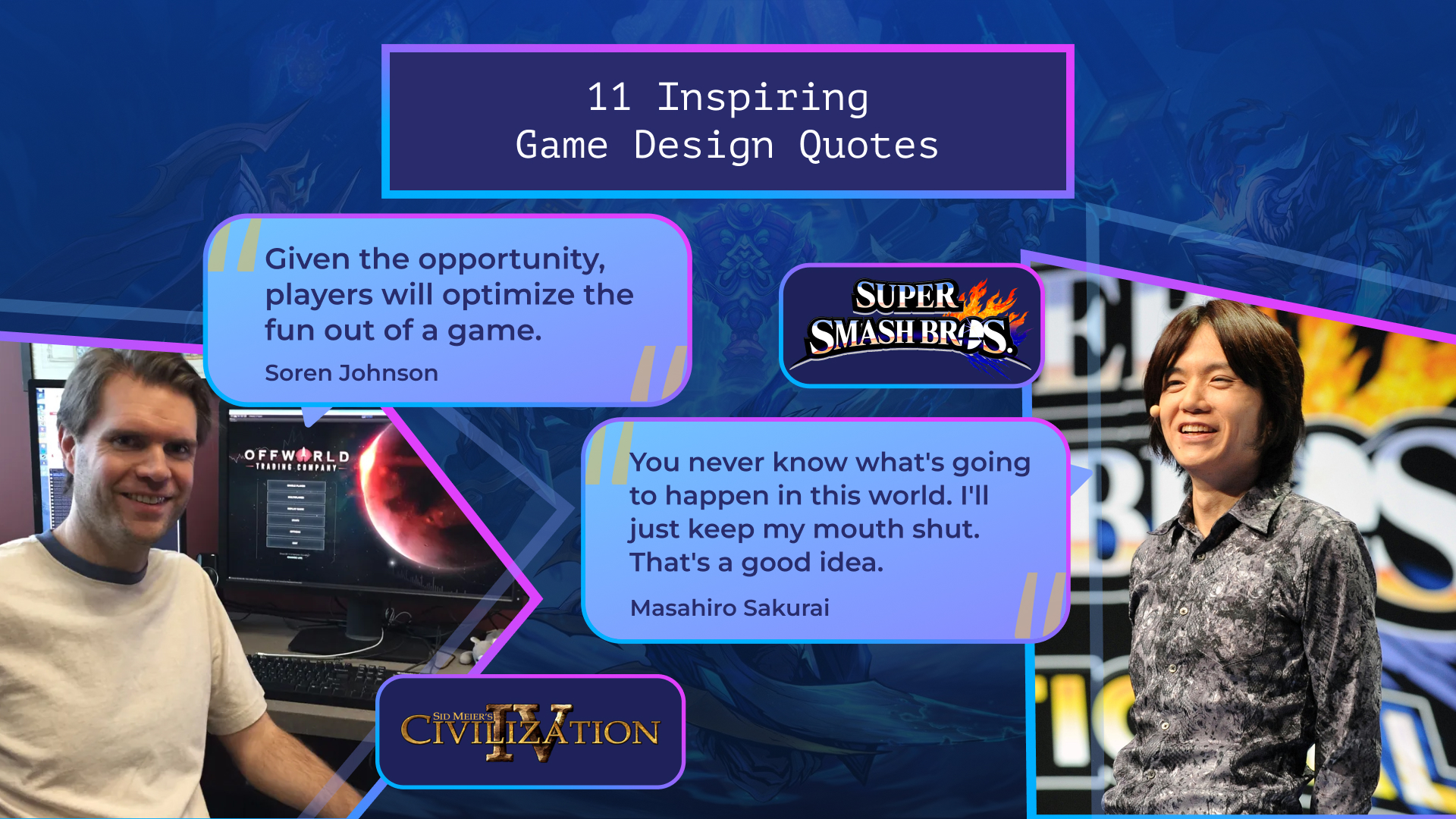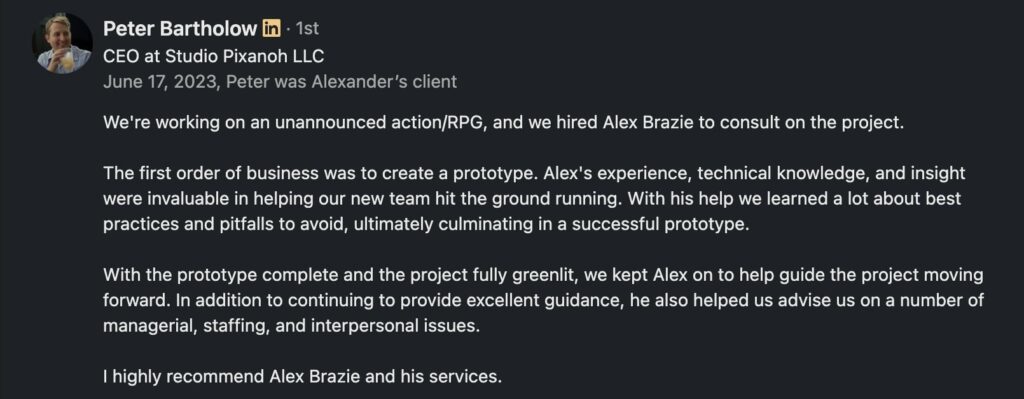Inspiring game design quotes are guiding principles for devs, designers, and investors as well. Learning these design principles helps with finding the tools needed to start on solo game design and development. A lot of students and learners tend to start out by studying the principles of established designers in the industry.
Take designers such as Masahiro Sakurai and Shigeru Miyamoto as examples. Both are known for creating games that are considered timeless and continuously successful. Sakurai’s Super Smash Bros. series is an accessible platform fighting game with high popularity even today, despite a lack of content since 2021. Miyamoto’s Legend of Zelda series, on the other hand, emphasizes exploration and universally appeals to all kinds of players. Taking a look at their design principles helps with figuring out what makes their games so popular and successful.
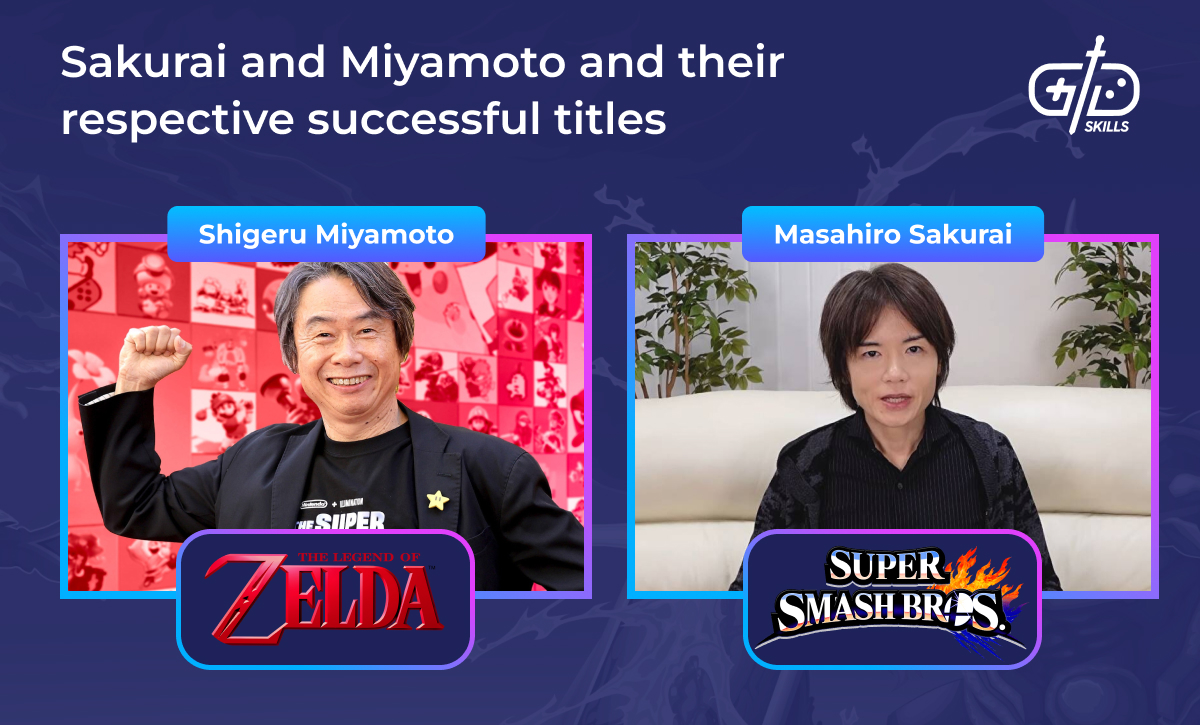
Whether you’re a student or an experienced dev, looking into famous game designer quotes gives you principles that guarantee better designs and more efficient development processes. The quotes I’ve covered below highlight not only why it’s important to prioritize emotional engagement, but how to think like a designer and receive feedback as well. Keep reading for advice from respected designers, including Sakurai and Miyamoto.
1. “Character is the nexus of story and gameplay.” by Mohammad Alavi
Mohammad Alavi is recognized for his work on major FPS titles such as Call of Duty, Titanfall, and Apex Legends, and is the founder of BadMofo Games. He’s held senior roles at Infinity Ward, Respawn Entertainment, and now Wildlight. In FPS games, Alavi is credited with designing iconic missions like ‘All Ghillied Up’ and ‘No Russian’.
Alavi and other leaders at Respawn highlighted that, “Character is the nexus of story and gameplay,” in order to push the team to come up with stronger characters that aligned with the gameplay and narrative. The quote is essentially a design principle that came up while he was working at Respawn, and then later at Wildlight.
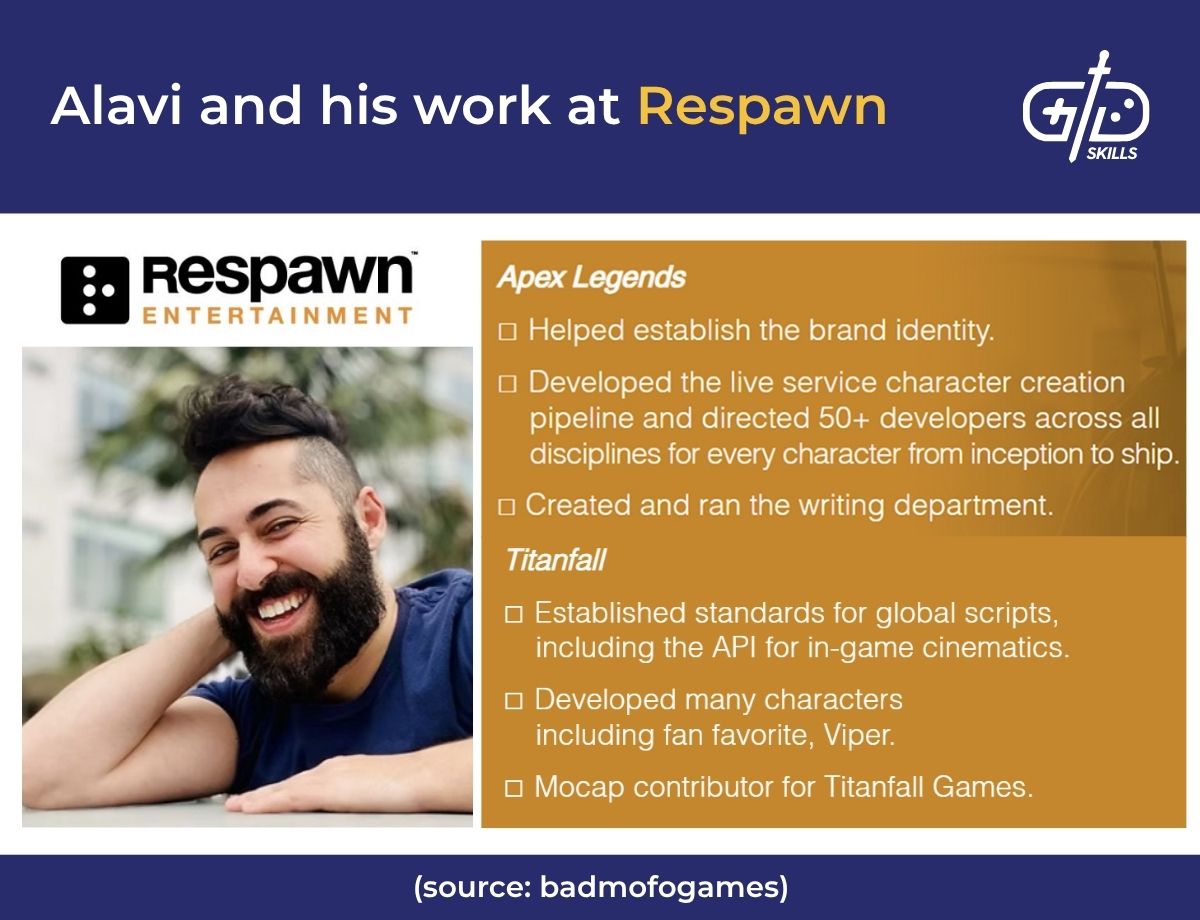
Looking at Alavi’s work in COD and Titanfall 2 in the context of the quote helps with understanding what it means. Both games combine gameplay and narrative via in-depth character design. In this sense, how much a player is emotionally invested is tied to the character.
Mechanics like stealth and combat styles become more impactful when they showcase both the character’s personality and their backstory. Take Naoe and Yasuke from Assassin’s Creed Shadows as practical examples.
Naoe is a ninja, so she’s great at acrobatic manoeuvres and stealth, which all make sense with her covert upbringing. Yasuke is a samurai who’s better with direct combat, which ties into his warrior ideologies. Both characters have combat styles that showcase their background, increasing their emotional resonance with players.

Alavi’s signalling that integrated design needs to be brought into the design process. Integrated design is when you develop mechanics, narrative and progression all together, placing the character in the center and building everything around them. The character has to be a bridge between the narrative and the mechanics, with the gameplay showing who the character is instead of just what they do.
I’ve seen narrative designers interpret Alavi’s quote as guidance to make plot twists and emotional arcs that relate heavily to character backstories. Gameplay designers look at the quote as more of a challenge to blend mechanics and character traits. Titles like The Last of Us and Red Dead Redemption 2 are successful because the character’s story progresses with the gameplay.
In the Lakeside Resort chapter from The Last of Us I, Joel is injured so he’s unable to move. Players are then able to play as Ellie, who’s been just a supporting character until then. There are distinct changes in combat styles since Ellie is a character with less experience, plus she’s smaller so she prioritizes stealth in her movements.
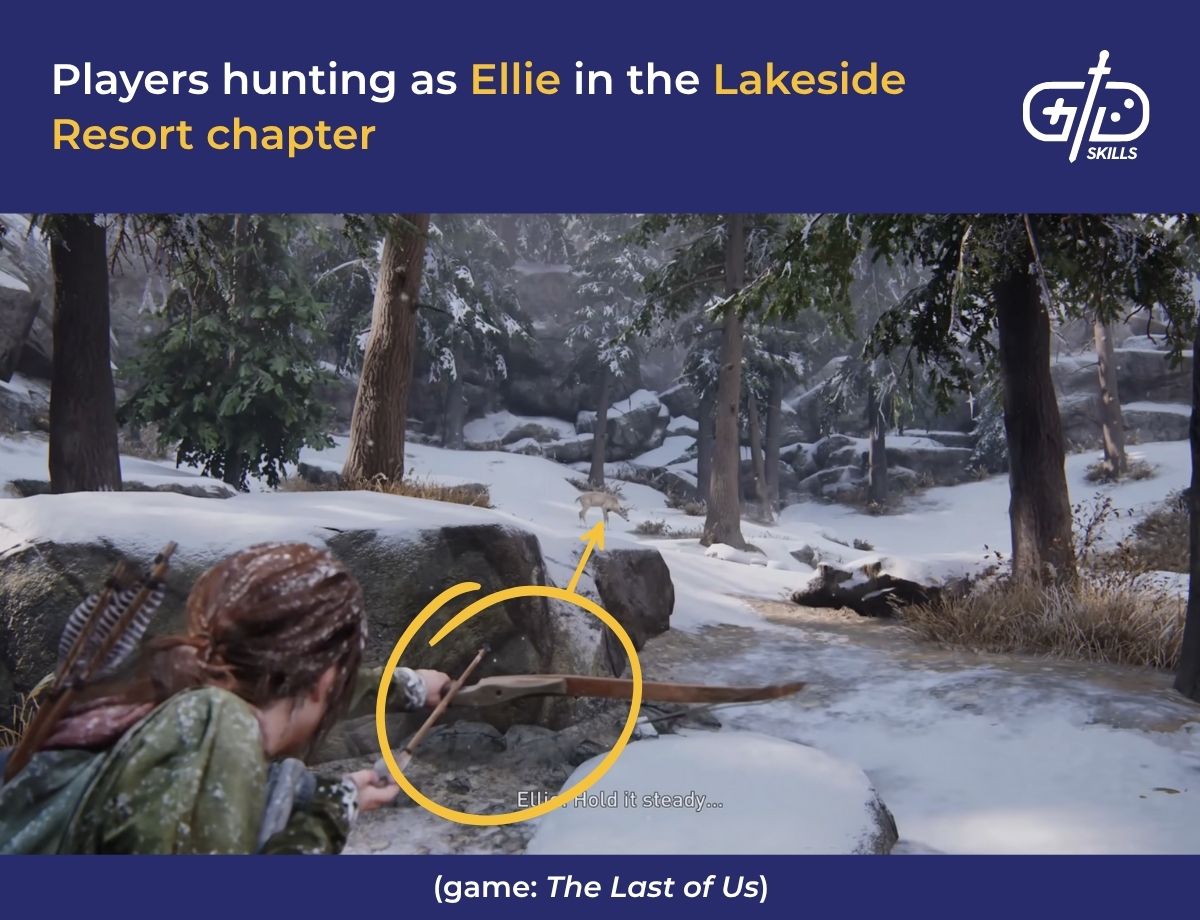
The takeaway from Alavi’s quote is to flesh out the character before starting on gameplay, and then structure the story around the character’s past. Their past is important since it’ll affect what choices they make in the future. Integrating that kind of character-focused design helps with player engagement because of the emotional appeal it presents, and consequently sustains player progression.
Kratos from God of War exemplifies character-driven design through his combat style. We know that he was once motivated by anger and revenge, but in the current timeline is a father dealing with grief. His fight style is slower, heavier, and more deliberate, showcasing his character development. The mechanics and story align through the ways Atreus, his son, grows with their bond and how exploration dialogues reflect Kratos’s internal struggles.
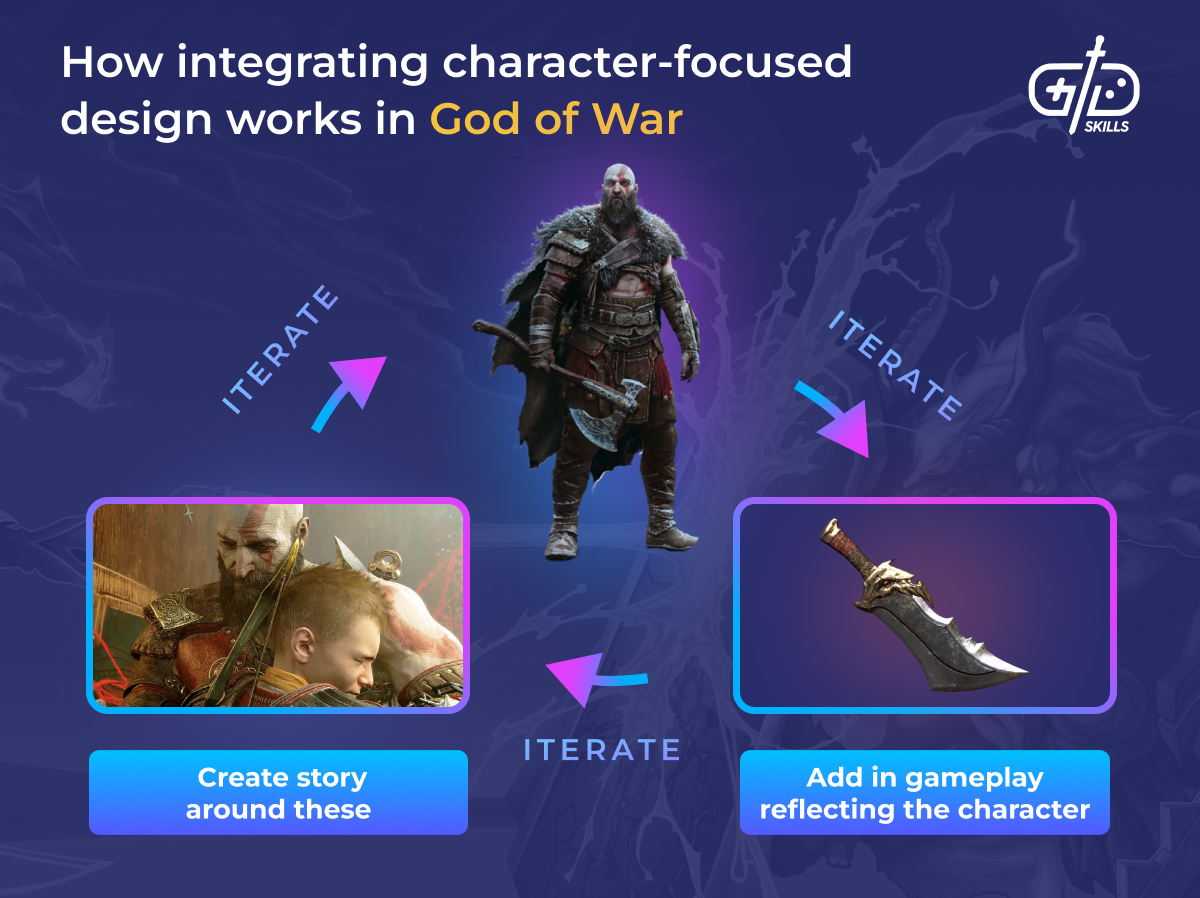
Alavi’s quote gives a clear principle for game designers overall. The quote tells designers to tie mechanics and other elements to character identity by encouraging game writers, artists and gameplay devs to design around the character. All in all, the quote taps into how players form emotional bonds with characters and how that increases retention, engagement and even revenue in live-service titles.
2. “The story comes only after the core of the game system is completed.” by Shigeru Miyamoto
Shigeru Miyamoto is known for games such as Super Mario and The Legend of Zelda, as well as Donkey Kong and Pikmin. After joining Nintendo in 1977, he revolutionized game design by combining intuitive gameplay with worlds that were inspired by his hometown, Kyoto.
Miyamoto has reiterated his stance behind the quote, “The story comes only after the core of the game system is completed,” in interviews over the years. The design principle is obvious when looking at how development for Zelda and Super Mario Bros. was carried out in the 1980s. Miyamoto and his teams focused more on developing the core gameplay mechanics before they brought in any narrative elements.

The quote isn’t ignoring how important the story is, but outlining a practical structure for development processes. Miyamoto means to say that gameplay is what makes a game successful so mechanics have to be both fun and engaging before you start on narratives. Even though stories increase emotional depth and motivation, they shouldn’t be allowed to drive the mechanics. Miyamoto believes games are about doing, not just watching, so core systems need to let players have control and agency first.
Looking at Miyamoto’s quote makes it clear how Nintendo is able to create timeless and accessible games that are seen as guiding tools by the industry. Designers usually interpret the quote as advice to prototype any core mechanics first and to avoid finalizing narratives too fast. Narrative teams align plotlines and lore with possible player actions so stories come from how players interact with the game.
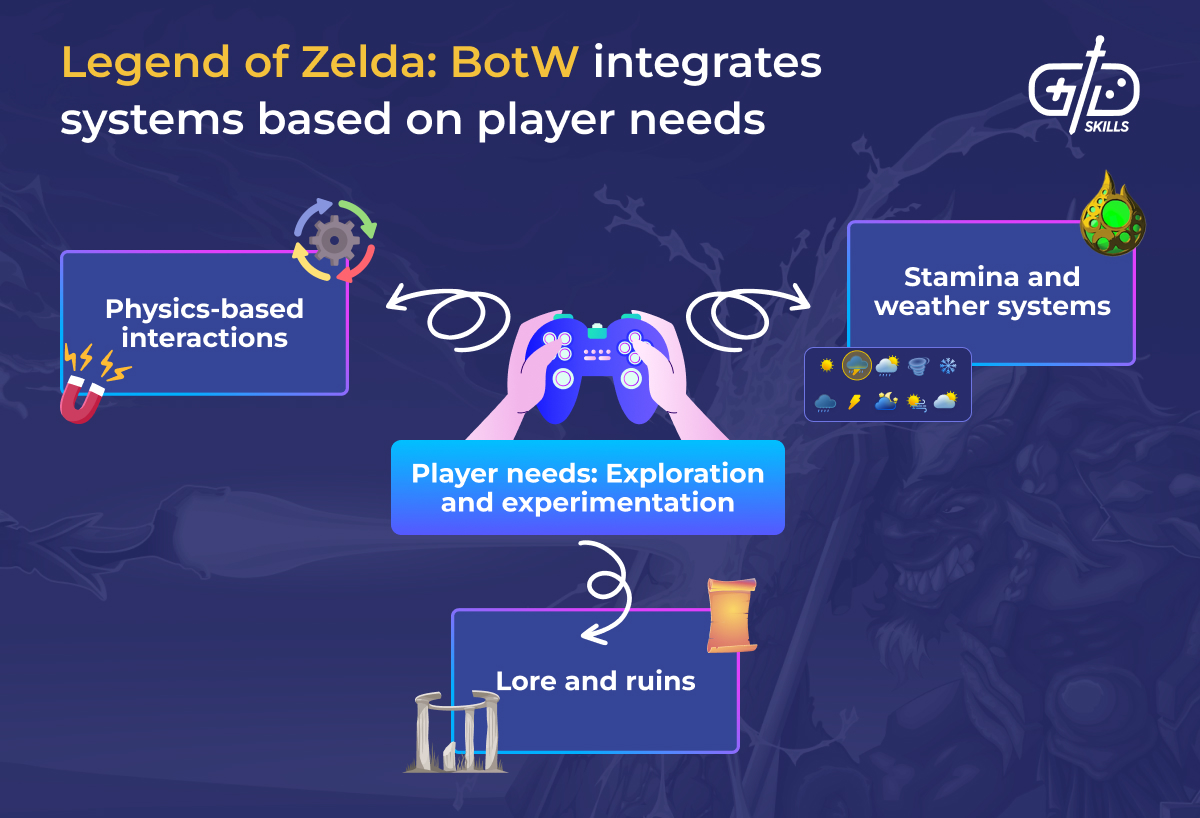
According to Miyamoto, devs need to account for player needs and then figure out how to increase emotional appeal. Story progression won’t have an impact if players aren’t able to actually engage with the gameplay via the system which is why it’s important you design around player needs first.
Following Miyamoto’s quote is helpful since it separates core systems from narratives, which makes iteration easier. Devs are able to focus more on creating emergent gameplay and progression instead of just storylines, when they put players first. Resources are then allocated for mechanics, rather than lore and cutscenes.
3. “Games are a series of interesting decisions.” by Sid Meier
Sid Meier is an infamous figure in strategy game design, best known as the creator of the Civilization series and co-founder of MicroPose and Firaxis Games. His influence helped define the 4X genre of eXplore, eXpand, eXploit and eXterminate. Meier’s design approach is seen in simulation titles such as Sid Meier’s Pirates, Railroad Tycoon and Alpha Centauri.
Meier’s quote, “Games are a series of interesting decisions,” became popular during his talks and interviews. A memorable occurrence was when he quoted it at the 2012 GDC while explaining how to design games around player choices. He used the quote because he noticed that a lot of designers were just putting in elements from other games without making sure that those elements created meaningful choices for players.
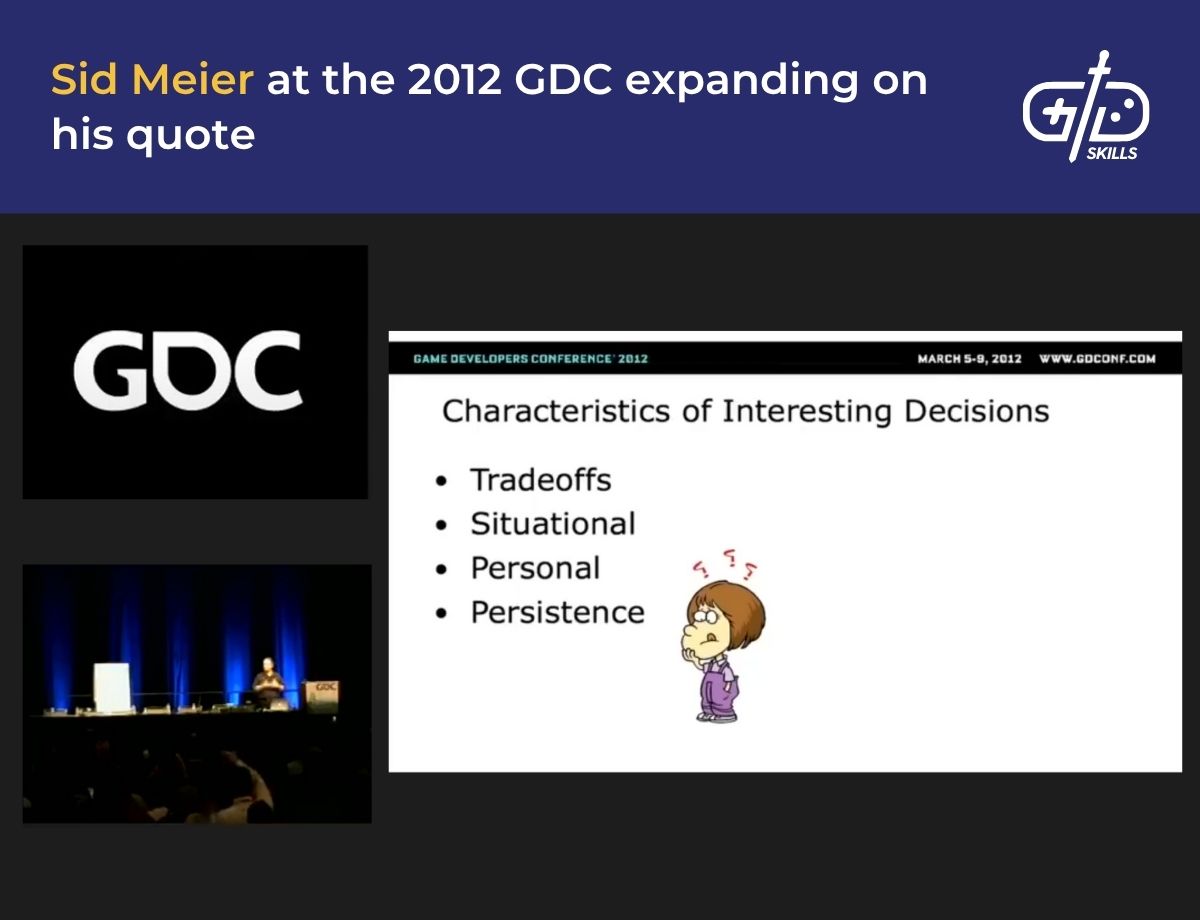
Meier’s quote is from the perspective of players, instead of designers. He’s giving priority to player agency. Designers need to keep in mind that effective decisions need to involve risk but have rewarding outcomes. Players need to be able to make informed choices on their own, but designers need to hand them the necessary tools for that first.
The Witcher 3: Wild Hunt gives players choices in morally gray contexts. Helping one faction over another puts the unhelped faction in danger, with severe consequences later in the game. Even decisions made early in the game affect the world state or the ending. Player agency is put front and center since players are motivated to make choices only after they understand the context and possible pushbacks. Every choice becomes important, which automatically increases immersion and engagement.
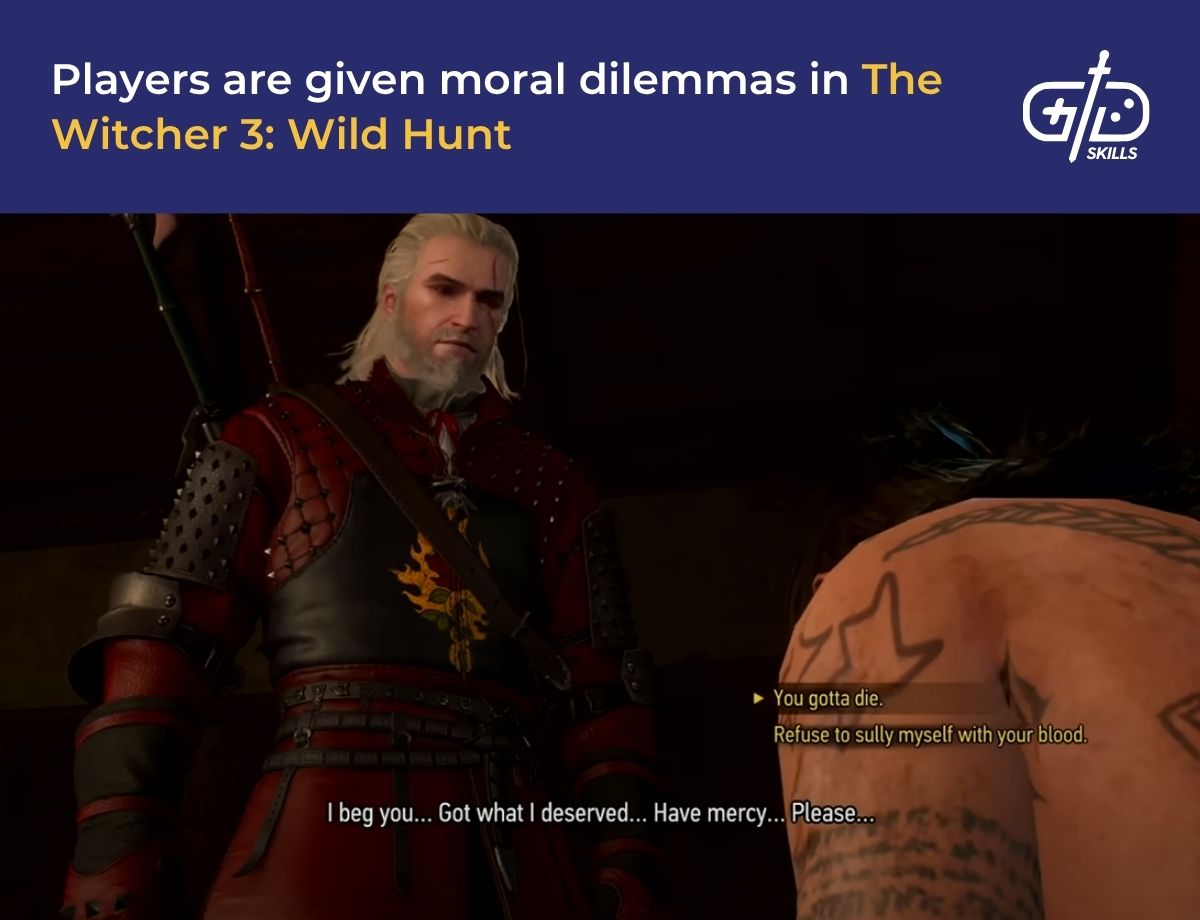
What makes a decision ‘interesting’ depends on the game and player state, as well as what information is given out. Meier clarifies what’s not an interesting decision, too. Choices that are obvious, random or inconsequential add nothing to gameplay and break immersion.
The game industry uses Meier’s quote to sanity check whether their choices are significant to players. Strategy and simulation designers operate on the same wavelength since they check if their systems offer any meaningful depth. Narrative designers are able to apply the quote to branching storylines to make sure the choices reflect player values and possible pushbacks.

What’s needed to be understood from the quote is to always look at the game through a player lens to find every fork in the road they face. Doing that helps understand what choices create tension and add depth so players are able to learn and express themselves. By integrating interesting decisions, designers make their games immersive and engaging.
Meier’s quote is used as a foundational principle in game design, and for good reason. The quote encourages designers to ask what decisions a mechanic offers and whether those decisions are interesting before implementing it. Player mastery is also taken into account since letting players make meaningful choices allows them to experience growth and mastery via their choices.
4. “Given the opportunity, players will optimize the fun out of a game.” by Soren Johnson
Soren Johnson is best known as the lead designer of Civilization IV, which is known for its clean systems and modding support. Johnson created Offworld Trading Company and Old World, and is the founder of Mohawk Games. He runs a blog called Designer Notes where he shares thoughts on game design philosophy, interviews and postmortems.
The quote, “Given the opportunity, players will optimize the fun out of a game,” came up in 2011 on Johnson’s Game Developer column, “Water Finds a Crack.” Johnson was detailing his experience designing Civilization III and IV, where players found unintended exploits like ‘lumberjacking’ which disrupted the pacing and challenge they actually intended.

Johnson is pointing out how players put winning above everything else and end up neglecting variety or challenges, which ultimately removes the fun from the game. Johnson advises designers to look out for player behaviours and design systems in a way that accounts for these behaviours, as a result.
The quote is influential among designers in strategy, sandbox and live-service genres since they’re known for modding support and player agency. It essentially directs system designers to test mechanics for any overpowering strategies and unintended loops. In the same way, narrative progression teams apply the quote to avoid grindy or super efficient paths that reduce gameplay variety.

Designers need to protect players from themselves by putting in fun gameplay and design systems. Implementing these prevents players from unintentionally breaking the game. Although playstyles mustn’t be restricted, players need to be guided so they don’t create objectives that ruin the game experience for them.
Johnson’s quote applies to multiple genres because players always find a way to exploit the system. Designers need to check if systems support multiple playstyles or push players towards one optimal path. Similar to Johnson, designers need to understand that players are both independent and emotional. They put more weight on efficiency than fun because that guarantees a win.
5. “Thus a good designer has to both dread and seek out other people’s advice.” by Jason Rubin
Jason Rubin co-founded Naughty Dog and co-created Crash Bandicoot, as well as Jak and Daxter. He was president of THQ during its last years and right now has a leadership role at Meta where he focuses on Metaverse content.
The quote, “Thus a good designer has to both dread and seek out other people’s advice,” comes up in part four of his and Andy Gavin’s 2011 blog series ‘Making Crash Bandicoot’. The blog talks about Naughty Dog’s early days and the problems they encountered while building Crash Bandicoot for the original PlayStation. Rubin is described by his team as someone who spots and points out flaws, making the team and himself redo sections multiple times.

The quote states a universal feeling, which is that feedback tends to be harsh and feels worse when it’s on something you’ve spent hours on. Rubin encourages a different perspective though. Criticism stamps on a person’s ego, but it forces them to confront their weak points. Despite obvious discomfort, feedback is essential to creating tasteful design since it points out blind spots and ultimately pushes for refinement. In the end, a skilled designer needs to build up emotional resilience by welcoming feedback.
Rubin is being realistic since he’s experienced similar situations, as have all devs and designers in collaborative environments. The quote reminds designers that well-rounded systems come from teams working together, instead of one person grinding solo. It’s also used by producers, publishers and investors since it reminds them to be constructive when they give feedback and not just point out what’s wrong.

Feedback is important and necessary to improve the whole project. A flaw in one part tends to derail the entire project upon launch. Even though feedback leans towards being demotivating, Rubin is basically asking designers to get gameplay feedback from people who haven’t played before. This is because the amount of trouble they’ll have figuring out the controls showcases what parts need to be fixed for accessibility. The next step is to take it in stride and use the responses for refinement, instead of becoming defensive.
Rubin’s quote is helpful as it reinforces the impact feedback cycles have in iterative design, especially for progression systems or emergent gameplay mechanics. Invite critique from other writers, engineers and analysts instead of just designers. Accepting feedback on solo work is a sure way to improve the project as a whole.
6. “You never know what’s going to happen in this world. I’ll just keep my mouth shut. That’s a good idea.” by Masahiro Sakurai
Masahiro Sakuari is recognized for creating Kirby and leading the Super Smash Bros. series. Sakurai started his career at HAL laboratory where he created Kirby and directed Kirby’s Dream Land. He then founded Sora Ltd. where he freelanced as a director and designer on titles like Kid Icarus: Uprising and Super Smash Bros. Ultimate. Sakurai runs a YouTube channel called Masahiro Sakurai on Creating Games at the moment.

The quote, “You never know what’s going to happen in this world. I’ll just keep my mouth shut. That’s a good idea,” is circulated in quote compilations and fan wikis. It’s a reflection of Sakurai’s experience dealing with fan expectations and media misinterpretations, as well as corporate confidentiality from his time at Nintendo.
Sakurai is the face of Super Smash Bros., since he presents new content, and talks extensively on its creation and development process. His word is taken seriously which is why even offhanded comments from him cause a big reaction. Sakurai is mindful of what he says because he wants to avoid giving fans false expectations about content. He’s expressed frustration with the media, as well, for taking his words out of context and overanalyzing them. Another reason Sakurai is mindful is because of NDAs and internal timelines at Nintendo.

The quote showcases how unpredictable the game industry is, with evolving projects and feature cuts so announcements are tightly controlled. By choosing to be silent, Sakurai isn’t advocating for secrecy, instead he’s prioritizing trust and avoiding unnecessary speculation.
Fans and devs see the quote as a sign of Sakurai’s professionalism since it shows the importance of timing in PR. You need to be transparent only at the right moment. The quote is meme-worthy though, making fans joke about how Sakurai knows everything but says nothing about future Smash Bros. content. The fact it’s a point of amusement rather than criticism proves the value of cultivating a public image as someone to be trusted.
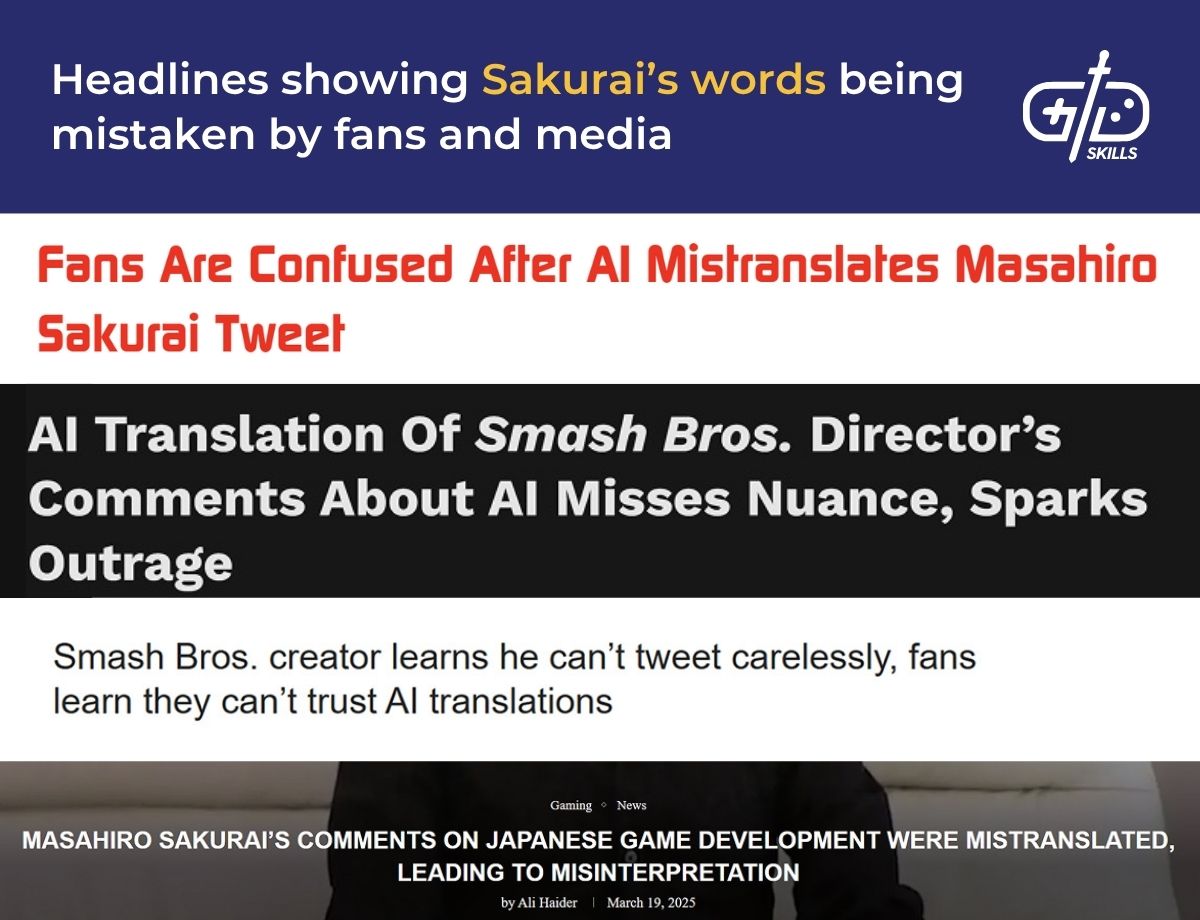
I think being mindful of what’s said in public helps protect both fans and devs. Releasing a lot of information early on, before confirming elements, messes up team morale and player expectations. Staying quiet lets teams iterate freely without being locked in by public expectations and designers are able to scrap and refine without pressure as well.
Sakurai’s quote is a learning tool since it iterates how important timing and communication are. In sandbox genres, systems evolve over time so it’s smart to wait until mechanics are finalized before opening the floor to the public.
7. “The successful free to play games are selling emotions. Not content.” by Nicholas Lovell
Nicholas Lovell is best known for his work on free-to-play (F2P) economics and his book, Games as a Service. Lovell is the founder of Gamesbrief, which is a site dedicated to helping developers build sustainable, player-centric games. His books include The Curve and The Pyramid of Game Design and offer frameworks for monetization, player segmentation, and long-term engagement. Lovell has advised studios like CCP, Bohemia Interactive and Firefly and serves as Game Director at Electric Square currently.
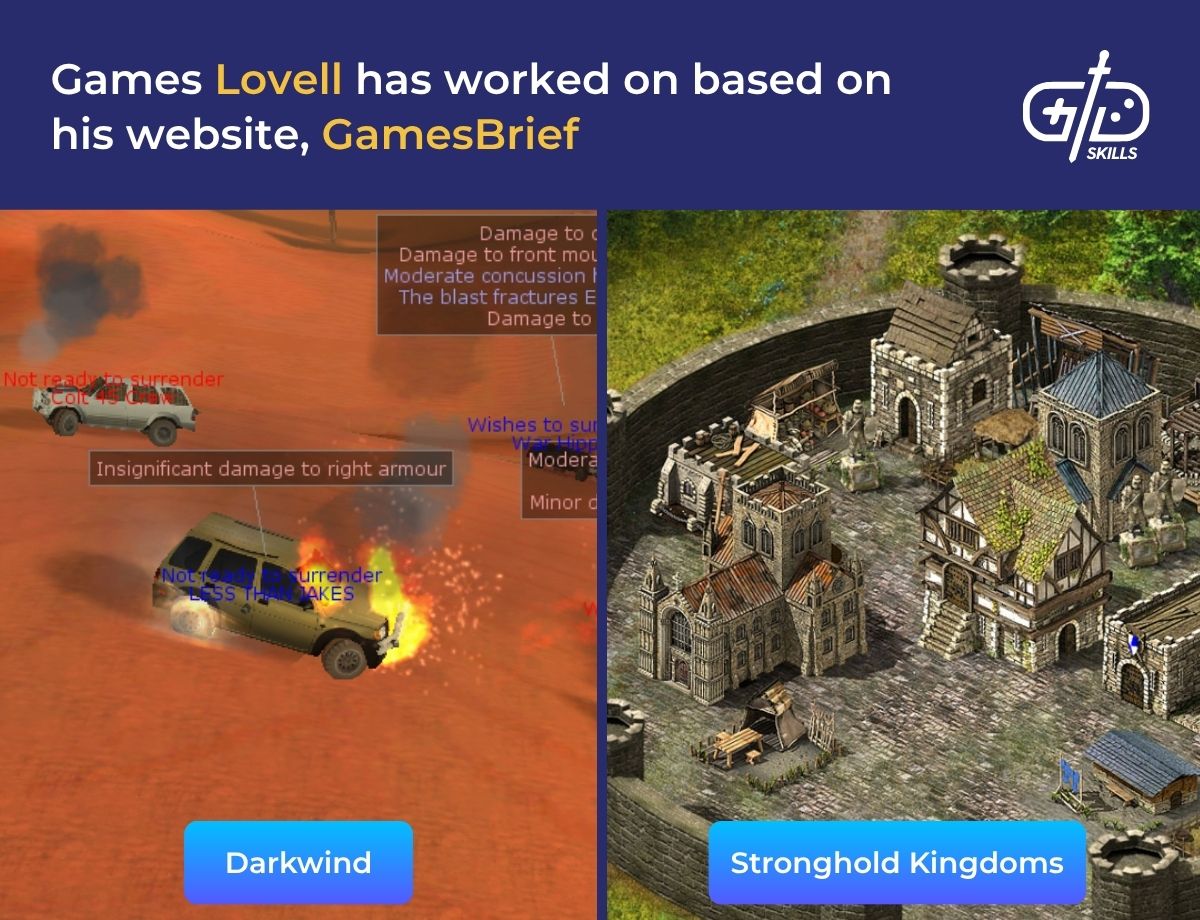
Lovell’s quote, “The successful free to play games are selling emotions. Not content,” became popular in the early 2010s, once F2P models started focusing more on player-centric design. The quote has been shared by him in multiple talks and writings, including blog posts on Gamesbrief. Lovell was talking about how devs at the time were finding it hard to balance both profit and play satisfaction in F2P games when he made the quote.
Profit isn’t made by selling more content, like levels, skins and weapons. Player emotions drive revenue, so devs need to focus more on making their games emotionally engaging. For example, Genshin Impact is a F2P friendly game that has purchasable content, including special event skins for fan favourite characters.
Genshin Impact released Diluc’s Read Dead of Night skin with custom visual and sound effects. The skin showcases Diluc’s undercover identity as the Darknight Hero by having darker colours than his usual skin. His vision, the source of his elemental power, is hidden which emphasizes secrecy. That’s a minor detail, but fans noticed it. Players felt drawn to the skin because of its lore potential, as a result. In the end, Hoyoverse made considerable profit even though there were complaints about the high price.

Modern F2P designs prioritize emotional depth and engagement. Integrating emotional arcs, like surprise drops or long-term goals hooks players and makes them keep playing. Narrative and progression designers apply the quote to make sure that game rewards are meaningful. Lovell essentially reminds devs that monetization is supposed to empower players, not exploit them. They need to feel like they really gain something through the purchase.
The takeaway is to combine emotional depth with content. A new skin or weapon isn’t valuable on its own but because of how it makes players feel. Take a look at the Elementalist Lux skin from League of Legends. The skin lets players unlock elemental forms mid-game with unique visual effects, voicelines and animations. Players then feel powerful and immersed because Lux’s identity evolves as they play.

The quote is helpful to keep in mind while you design since it’ll remind you to make systems that motivate players via mastery and agency. Bridge design and business, like Lovell’s done, and treat monetization as a design problem instead of a pricing issue. The key to a successful F2P game is making sure players have fun, are able to work towards mastery and are engaged. In that sense, monetization is solvable by coordinating with the overall team instead of just the marketing and accounting teams.
8. “Perfection is achieved not when there is nothing more to add, but when there is nothing left to take away.” by Antoine de Saint-Exupéry
Antoine de Saint-Exupéry was a French aviator, poet and author best known for writing The Little Prince. Saint-Exupéry flew dangerous airmail routes across Africa and South America, and later reconnaissance missions during WW2 but disappeared during a flight over the Mediterranean in 1944. In the context of game design, his novella, The Little Prince, inspired multiple adaptations including indie and tabletop-style game projects.
Saint-Exupéry’s quote, “Perfection is achieved not when there is nothing more to add, but when there is nothing left to take away,” is from his 1939 memoir Terre des Hommes, meaning Wind, Sand and Stars. He was reflecting on how aircraft design was able to progress by removing instead of adding features.

Saint-Exupéry’s basic argument was to keep it simple. I think that in the context of game design, you need to keep iterating your game until only what’s essential is left. During iteration, don’t keep adding elements. Instead keep removing pieces that don’t add anything practical. The process is similar to sculpting, where a sculptor keeps carving at the marble to get to the finished piece.
The quote guides UX and product designers to make interfaces simple for clarity and user flow. Writers and artists apply the quote to editing by cutting edges to get to core meanings. Game designers, on the other hand, use it to refine mechanics, remove redundant systems and to make sure every loop has a purpose.
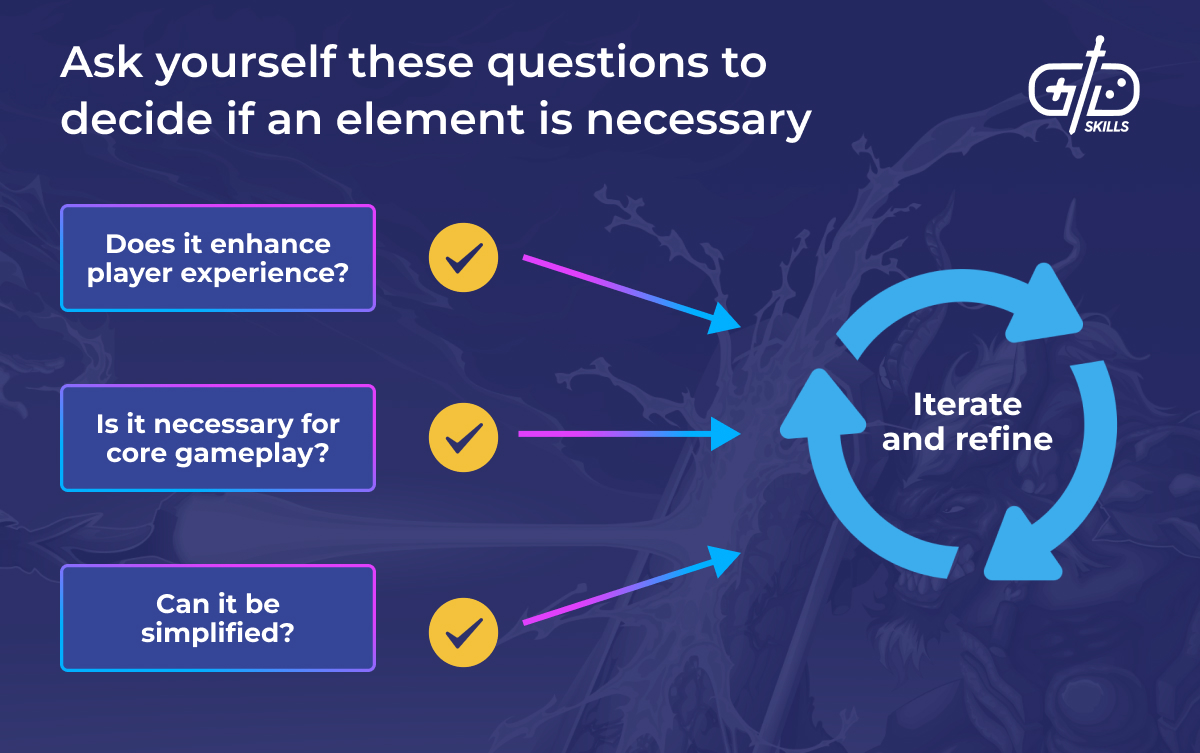
Following Saint-Exupéry’s quote helps find frameworks that are unnecessarily complex. It’s fine to scrap bits that don’t serve player experience or project goals which is why iterative refinement is crucial to deliver an immersive game. To summarize, perfection is achieved through simplicity.
9. “A game is only late until it ships, but it’s bad forever.” by Siobhan Beeman (quoted by Ellen Guon)
Siobhan Beeman began her career at Steve Jackson Games, where she edited the Car Wars line, before she went into computer games at Origin Systems, where she directed Wing Commander II. Beeman is the principal Engineer and Senior Lecturer at DigiPen, teaching networking, computer security and software engineering right now.
Beeman’s quote, “A game is only late until it ships, but it’s bad forever,” was quoted by Ellen Guon during a 1996 BBC talk, crediting it to her partner at the time. For years the quote was wrongly linked to Shigeru Miyamoto, but game historian Critical Kate pointed out Beeman as the true source.

Beeman is referring to the choice devs need to make between meeting deadlines and polishing the game. Once a game ships, its flaws become permanent because players remember only how it played and not how quickly it came out. Beeman’s advice is that it’s better to delay rather than compromise on quality.
The quote is used by designers, in paraphrased terms, to justify pushing back deadlines so they’re able to focus on refinement. Marketing members then work with designers to make sure that the game is still received positively by fans despite development delays. Beeman is also quoted by players and fans when franchise delays occur, like for Zelda and Cyberpunk.
A practical demonstration of Beeman’s quote is Cyberpunk 2077. The launch was pushed forward to December 2020 from April 2020 because of open-world designs and quality. After launch, Cyberpunk 2077 still had technical issues on last-gen consoles like Xbox One and PlayStation 4. Players reported a lot of bugs and performance issues to the point where Sony removed the game from PlayStation, and gave a full refund.

To avoid a similar loss in revenue to Cyberpunk, it’s better for designers and devs to not rush systems that aren’t ready. To ease worry, look at forum discussions so you get a clear sense of how fans react both before and after release. Gauging how the fanbase is dealing with the wait gives you an idea of how far back to push shipping.
The quote is helpful to keep in mind since it reminds devs to iterate as much as needed and not rush production. In the end, it’s better to refine a framework instead of shipping out a broken system. It’s important to understand that extra polish time really does pay off once the game is out. Cyberpunk 2077 eventually went through a complete revamp and reversed its reputation, proving that fans are willing to wait extended periods of time for the most fun version of a game.
10. “Start playing and studying games through the lens of a designer.” by Tom Cadwell
Tom Cadwell, who goes by his alias ‘Zileas’, is the chief design officer and executive VP of R&D at Riot Games. Cadwell helped with shaping League of Legends from its pre-alpha stage, leading the design team through the game’s breakout years. Before Riot, Cadwell worked at Blizzard Entertainment, contributing to Warcraft III: the Frozen Throne and World of Warcraft as well.
Cadwell’s quote, “Start playing and studying games through the lens of a designer,” comes up in educational contexts, including his Riot Games leadership profile and design mentorship materials. The quote started circulating in the mid 2010s once Cadwell moved from leading League to Riot.

The quote encourages deeper engagement with games, which is why it’s used in educational contexts. Games mustn’t be treated as just entertainment, but systems that need to be studied, criticized and improved. Players and designers need to enjoy the game while asking why it works, how it communicates and what choices it creates. New ideas and elements are always popping up in the industry, so iterating upon games continuously keeps them on the shelf longer.
Cadwell’s quote is a foundational principle for game design because it directs students and junior devs to sharpen their critical thinking by reverse-engineering successful titles. Even experienced devs need to see how their concept looks against genre norms and find gaps for new ideas. The best way to go about it is to look at already successful titles and question why they’re successful.

Players and designers need to shift from player mode to designer mode during gameplay. Making that shift is what turns a hobbyist into a professional. Devs need to be able to analyze games actively to come up with a mental toolkit they’re able to use for personal projects and to guide their design choices.
Cadwell’s quote comes in handy since it’s advice that helps designers analyze systems like progression and fairness mechanics across genres. It makes benchmarking possible, too. By understanding what works and why, students are able to go beyond already existing concepts and design systems that are both familiar and new.
11. “Fun is when players have the drive to engage, grow in insight and develop responses that satisfy.” by Alex Brazie
I’m the owner and founder of game design skills. I go by Xelnath online and have more than two decades worth of accumulated experience from across AAA and indie studios. I’ve contributed to titles like World of Warcraft, League of Legends and Ori and the Will of the Wisps.
The quote, “Fun is when you have the drive to engage, grow in insight and develop responses that satisfy,” is from one of my online classes. I wanted to pin down ‘fun’ as something that designers are able to measure and work with, instead of just leaving it as a vague feeling.

Fun is something that’s active, since players need to feel motivated to engage with the game. An enjoyable game, in that sense, needs to teach, challenge or reveal something new. By the end of a session, players have to feel rewarded for how they were able to adapt, learn and express themselves in the game.
We wanted to make sure the player regularly had a chance to flex their new powers in a satisfying way, when I worked on the progression systems of Ori and the Will of the Wisps. In exploring the first area, Inkwater Marsh, the player unlocks and familiarizes themselves with tools that are put to a harder test in the next area, Kwolok’s Hollow. The double jump escalates into more difficult jumps with poles and eventually the air dash ability.
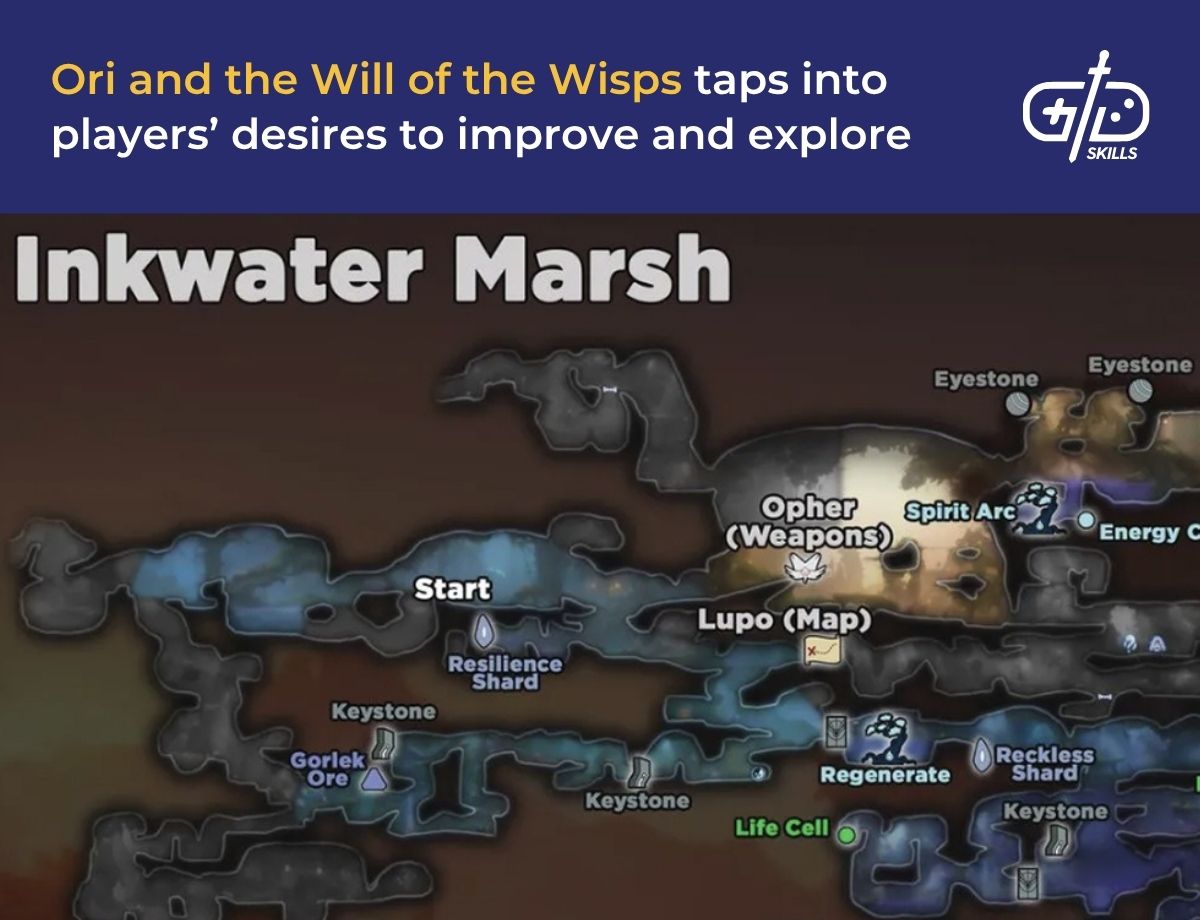
Viewing fun as active helps systems designers check if mechanics actually support growth and mastery. On the other hand, narrative and UX teams are able to make sure that emotional arcs feel earned. My goal with the quote essentially, was to push for design that’s both ethical and responsive to players.
I think the quote is useful because it gives you language to explain to investors what you want your game to mean to players. It works as a way to compare games based on how deeply they engage players, instead of just spotlighting the technical aspects. Players are active participants in a game so how they feel directly affects how successful your game is.


